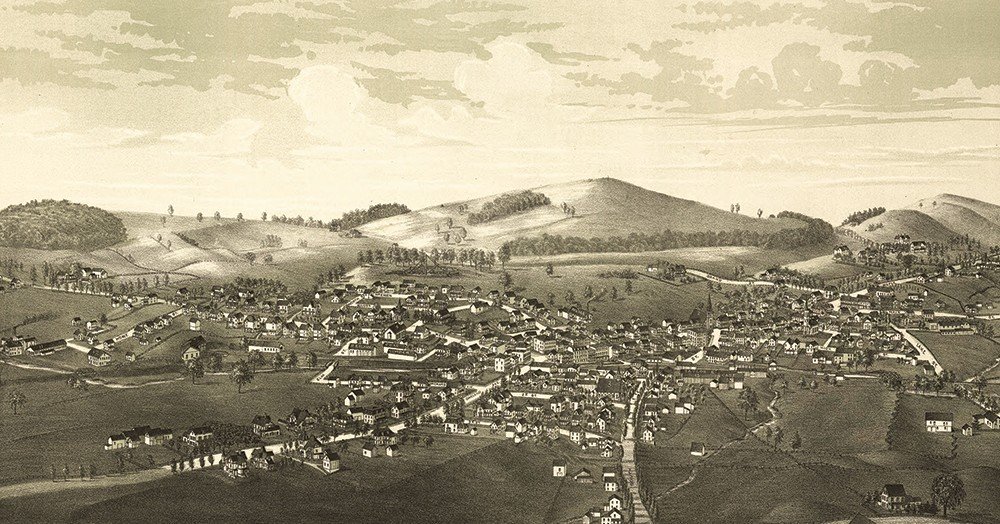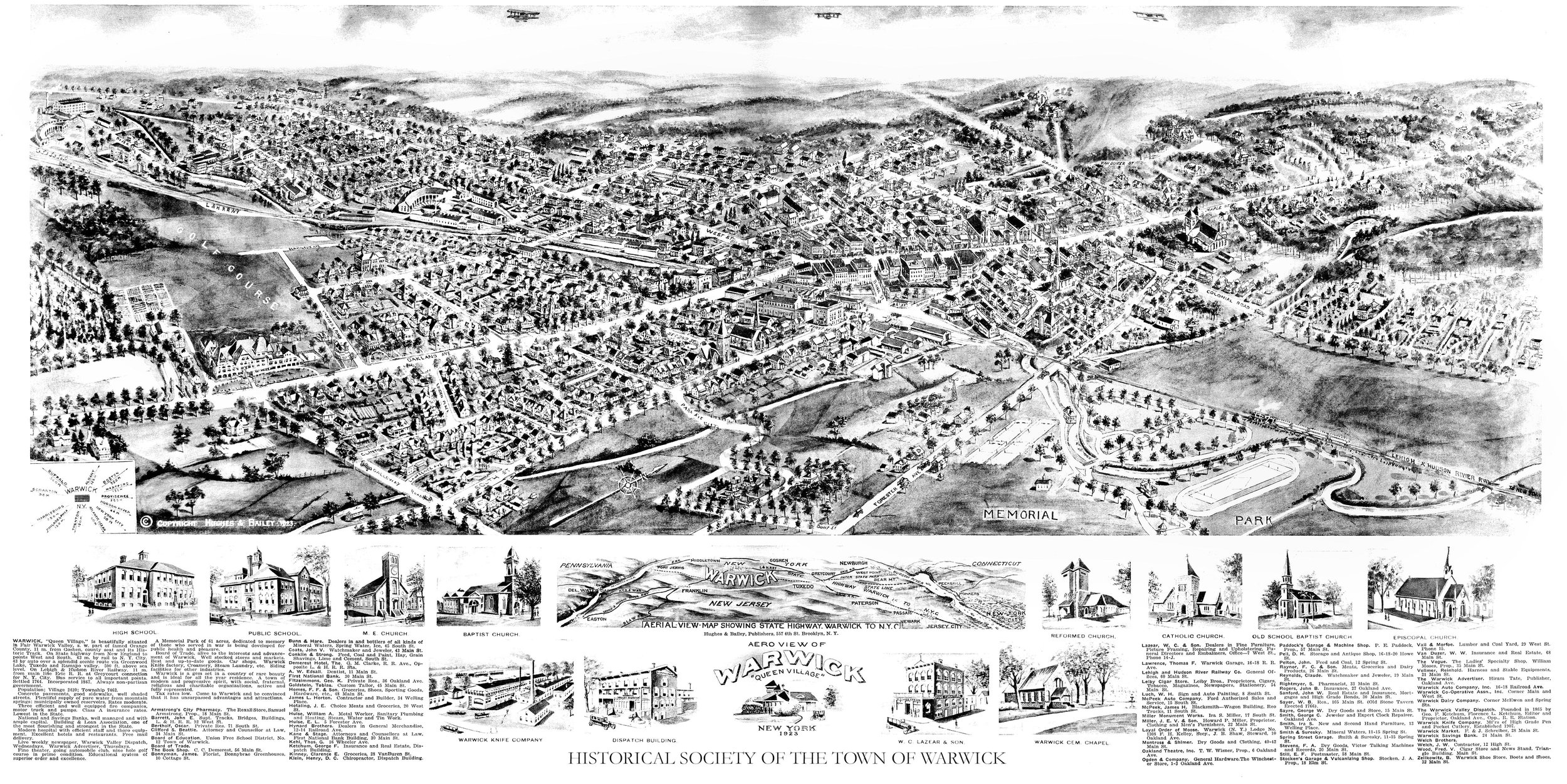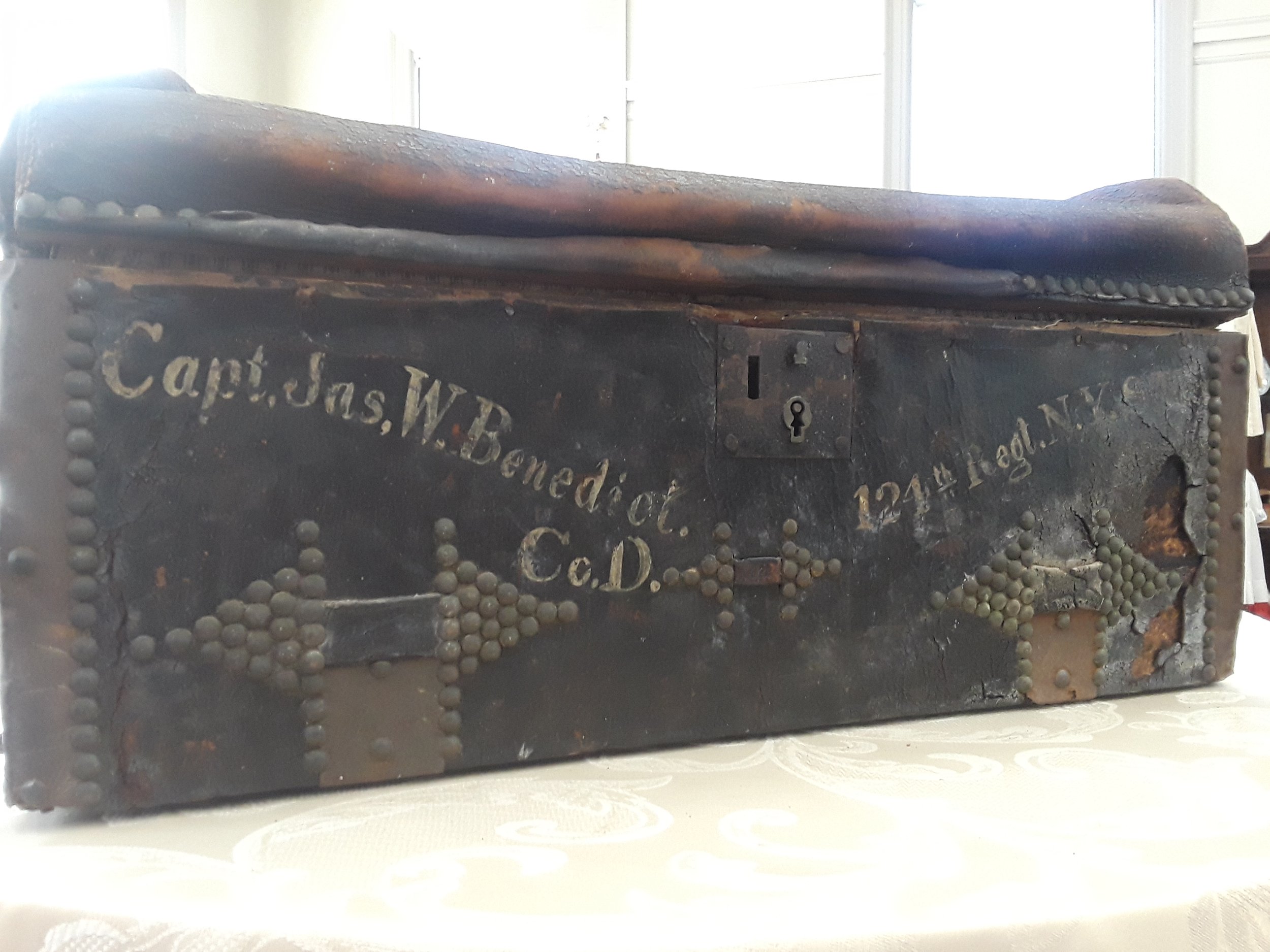
Explore
-

History Around Town
The Village of Warwick is steeped in history, from its street names, to the houses and buildings scattered throughout the Town. Our memories run deep, and our traditions and events keep us connected in the community.
-

The 1810 Store
As the official gift shop of the Warwick Historical Society, we collaborate with talented Hudson Valley artisans to offer custom, handcrafted pieces that honor Warwick’s rich heritage while embracing modern design. From one-of-a-kind keepsakes to exclusive gifts, our collection celebrates the past in a fresh, exciting way. Visit us Today!
-

Documents, Photos and Artifacts
Records of the people and circumstances which helped shape the Town of Warwick, some dating as far back as 1699, are carefully documented and preserved in the Archives department. WHS volunteers are available to assist with research by appointment: Archive@whsny.org.
-

Exhibits
Themed displays, antiques and artifacts, vintage fashion and accessories and more are featured in rotating historical exhibits. Check our Calendar Page to stay up to date on upcoming shows!
Discover Our Story
Take a journey through a century of preservation, passion, and community. Click below to read 50th Anniversary Book from 1957 and The Centennial History of the Historical Society of the Town of Warwick (1906–2006) by Patricia Roy McConnell — a fascinating look at our first 100 years.
👇 Click below to read the full booklets.

History of the Village of Warwick
Adapted from the work of Dr. Richard Hull
Europeans began to settle permanently in the Warwick Valley area after 1703 when the Wawayanda patent was signed with the local Minsi Indians. In 1719, Benjamin Aske purchased a small portion of the patent and established a farm, called Warwick, from which the present village took its name. In 1735, the ancient Wawayanda Path was transformed into a colonial King's Highway and the area was more opened up to white settlement. In 1749, Colonel Charles Beardsley bought land along the Wawayanda Creek from Aske and built his home at the corner of West and Main St. In 1764, James Burt built his home, the Shingle House. And in 1766, Francis Baird erected Baird's Tavern. By this time most of the Indians had left or had become assimilated into colonial culture.
The village was emerging as a provisioning, social, and religious center for surrounding farming families, one of many hamlets in town. It was smaller than Bellvale, Florida, New Milford, and Sugar Loaf. This changed dramatically with the construction of the Warwick Valley Railroad in 1860. Within a tew years Warwick was transformed into a prosperous and bustling center of commerce, banking, and retailing. In 1867 it was large enough to be incorporated as a village and to be endowed with its own government.
Amenities like a private subscription library, fire companies, waterworks, and tree-lined streets were soon established. Churches multiplied and a private school, the Warwick Institute, drew students from all over town. In 1864 the First National Bank of Warwick opened, followed eleven years later by the Warwick Savings Bank. These became powerful financial institutions that lent capital to the expanding local dairy and orchard industries. Both town and village developed a strong identity through the establishment of two vibrant weekly newspapers, the Advertiser in 1866 and the Dispatch in 1885.
By 1902, the village had its own telephone and power companies and it had taken on characteristics of a prosperous suburban community replete with many hotels, lecture halls, and ballrooms in the elegant Red Swan Inn and in the venerable Demerest House, all a stone's throw from the Lehigh and Hudson River Railway station. The village became the region's premier shopping center and a mecca for summer vacationers. In 1916 a hospital was opened, followed a year later by the Village Board of Trade. In 1927 the Albert Wisner Library was dedicated.
The emergence of the automobile age and the demise of the railroad took its toll on the village. A further blow came with the steady decline of our town's agricultural mainstay, dairy farming. In the 1950s and early 1960s business declined on Main Street, the Red Swan Inn was demolished, and many buildings fell into disrepair. The Chamber of Commerce, founded in 1939, struggled valiantly to keep businesses on Main Street from going under altogether.
A dramatic revival began in the mid-1960s, sparked by the village's spectacular centennial celebration in 1967. A new civic spirit emerged. Public parking lots were built, shade trees were planted, businesses were modernized, and historic buildings and homes were restored to their former grandeur thanks to leadership from the Historical Society, which helped place the village on the New York State and National Registers of Historic Places. Today, Warwick Village is one of the few in the state that can boast of surviving the mall-mania of the 1980s and 1990s and maintaining the integrity and commercial vitality of its central business district.

Read about the discovery and acquisition of a treasured heirloom once owned by Captain James Benedict - a resident of Warwick and Civil War veteran.

The Town of Warwick
Adapted from the work of Florence P. Tate, Town Historian
The Town of Warwick was formed by act of the State Legislature on March 7, 1788. In colonial times it had been part of the Precinct of Goshen. Its human history stretches back to the earliest documented evidence of man on this side of the Mississippi River, around 10,000 BCE. At the time of European colonization it was peopled mainly by the Minsi Tribe of the Lenape cultural group, whose ranks had already been decimated by diseases brought by the earliest explorers.
The name "Warwick" was first applied before 1719 to a farm of thousands of acres covering much of this area established by Benjamin Aske; and the designation became so well-known that it was natural to give it to the town when it was created. In colonial times, a well-traveled route passed through Warwick. The King's Highway came up the valley from Pennsylvania and New Jersey and led northeastward to the settlements along the Hudson River and thence to New England.
In its early days Warwick was settled by mainly English and some Dutch pioneers. During the Revolution John Hathorn's Warwick Militia helped guard the local area and the Ramapo Pass, and the chain that stretched across the Hudson to prevent the British from controlling the river was forged at the Sterling works.
The inhabitants of the Town met in April 1789 to elect the first Supervisor, Town Clerk, Constables, and Overseers of the Poor. From the first, for purposes of administration, the Town was divided into three districts: western, middle and eastern. For each district, an assessor, a commissioner of roads, a collector, and two fence-viewers were chosen. The Town retained its original boundaries until 1845, when the northeast corner (Sugar Loaf) was cut off to become a portion of the newly-formed Town of Chester.
A number of population centers or hamlets were in existence before the Town was formed. Early settlers made good use of the Longhouse Creek, building dams and mills and an iron forge and thus giving Bellvale its start. The Doublekill was another fine stream for water-power and mills, and there New Milford grew. The community of Florida was also established by the middle of the 1700s. During the 1800s, Amity, Edenville, and Pine Island became centers of population in the midst of the surrounding dairy, fruit, and vegetable farms. Iron mining, charcoal burning, and lumbering were occupations of settlers in the mountains from Sterling to Cascade; quarrying provided work near Mount Adam and Mount Eve. Greenwood Lake became well-known to hunters and fishermen and evolved into a popular resort and recreation area.
The town has three incorporated villages —Warwick (1867), Greenwood Lake (1924), and Florida (1946)-and many unincorporated hamlets are still called by their early names today. Some, such as "Centre," "Durlandville," "Lawton" (Lake), "Lakeville," and "Newport," have all but disappeared
The Warwick Valley Railroad began in 1860, later becoming the Lehigh and Hudson River Railway. The railroad greatly aided the growth of local dairy farmers and other industries. It became a major travel and freight route, and brought prosperity and a "commuter" population of New York City's wealthy to Warwick. They were anxious to escape the heat and crowds of the city in summer and to raise their families in the country, a tradition which continues here to this day.
In the past several decades population surges have changed the Town dramatically, but efforts to preserve the natural resources of the Town have been ongoing, starting in the 1970s. In 1998, Sterling Forest State Park was created, containing many acres of the Town's eastern, mountainous region. Great strides have also been made to safeguard the agricultural character of the central and western portions of our community. Local, state, federal, and privately funded programs have permanently protected over 1,200 acres of Warwick farmland from development, with 800 acres more in the process of being preserved for generations to come.
